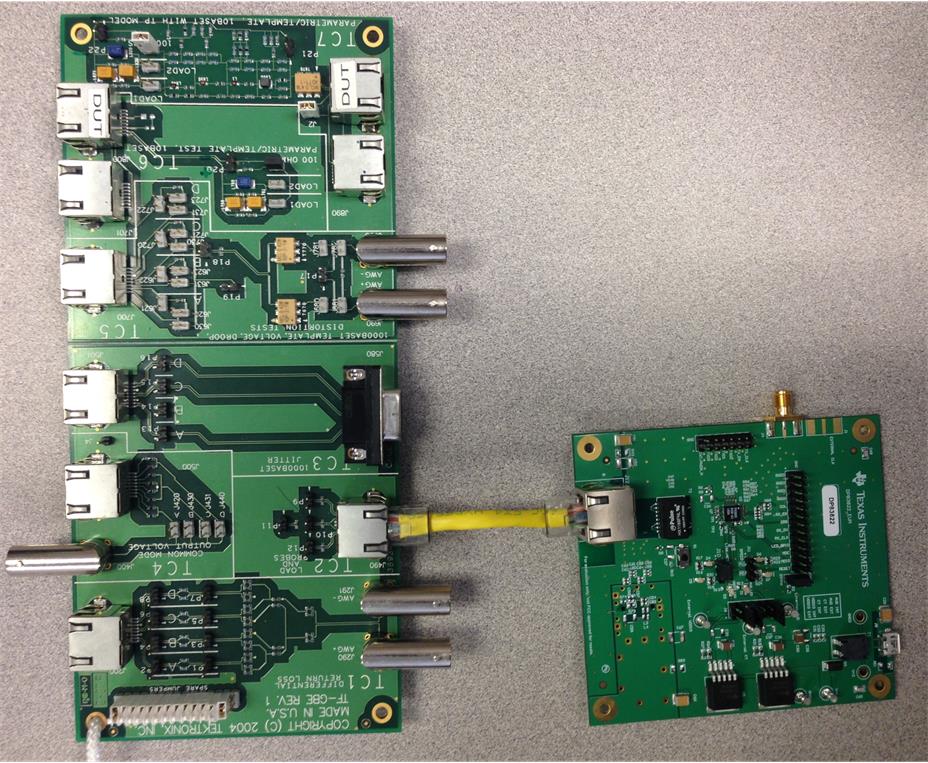SNLA266A January 2016 – December 2023 DP83822H , DP83822HF , DP83822I , DP83822IF , DP83825I , DP83826E , DP83826I
- 1
- DP8382x IEEE 802.3u Compliance and Debug
- Trademarks
- 1Terminology
- 2Standards and System Requirements
- 3Ethernet Physical Layer Compliance Testing
- 4How to Tune DP83825 VoD Swing
- 5IEEE802.3u Compliance Testing Scripts for the DP8382x
- 6References
- 7Revision History
3.1 Standard Test Setup and Procedures
For Ethernet physical layer compliance testing, the PHY is managed through the serial management interface (SMI – also know as MDIO interface) to configure the required test mode scripts. The testing results are determined and recorded by the Ethernet compliance software of the oscilloscope (for example, the TDSET3 test software from Tektronix). For proper operation of the software, consult the instrument user manual.
The variation between each of the Ethernet physical layer compliance tests is primarily the test mode (see Section 5) of the PHY and the connection to the test fixture Figure 3-1.
The software can typically test for many speed options, but testing for the desired end-application or use-case is important. For 10-Mbps to 100-Mbps testing, one or two channels (depending on MDI or MDIX) needs to be tested.
Accounting for sample sizes and run-to-run variation when conducting testing is important.
 Figure 3-1 DP83822 Connected to a Testing Fixture
Figure 3-1 DP83822 Connected to a Testing Fixture